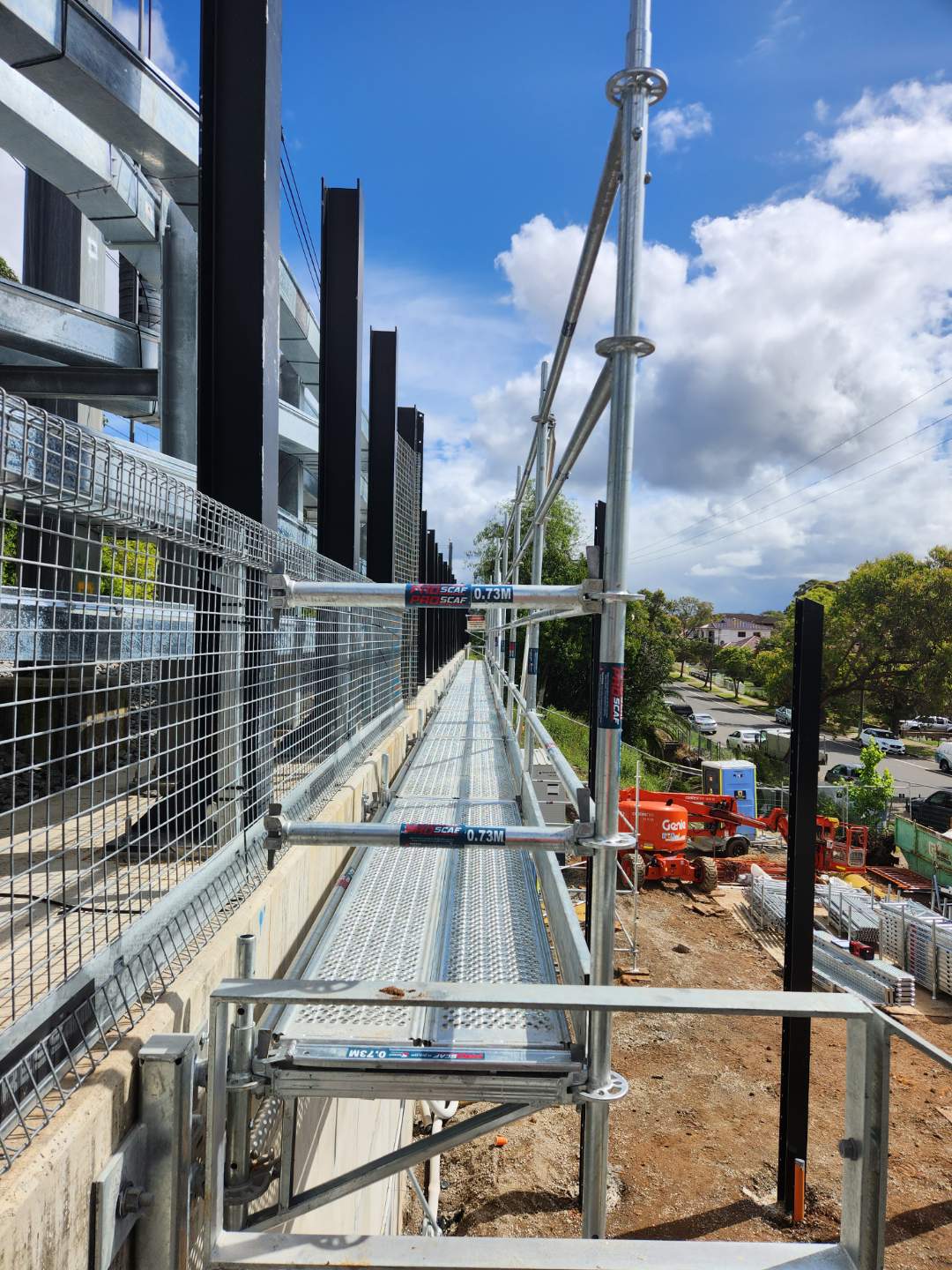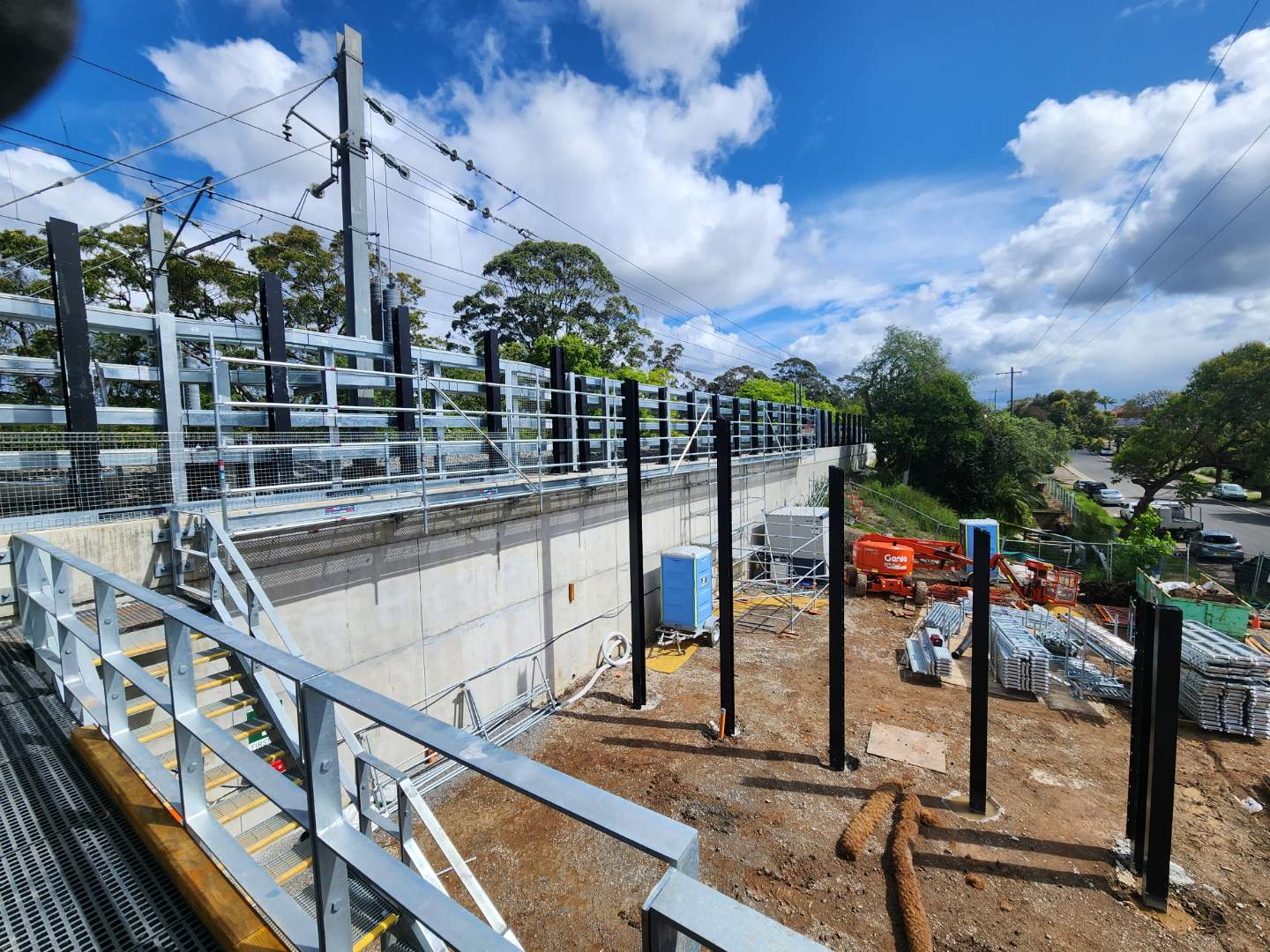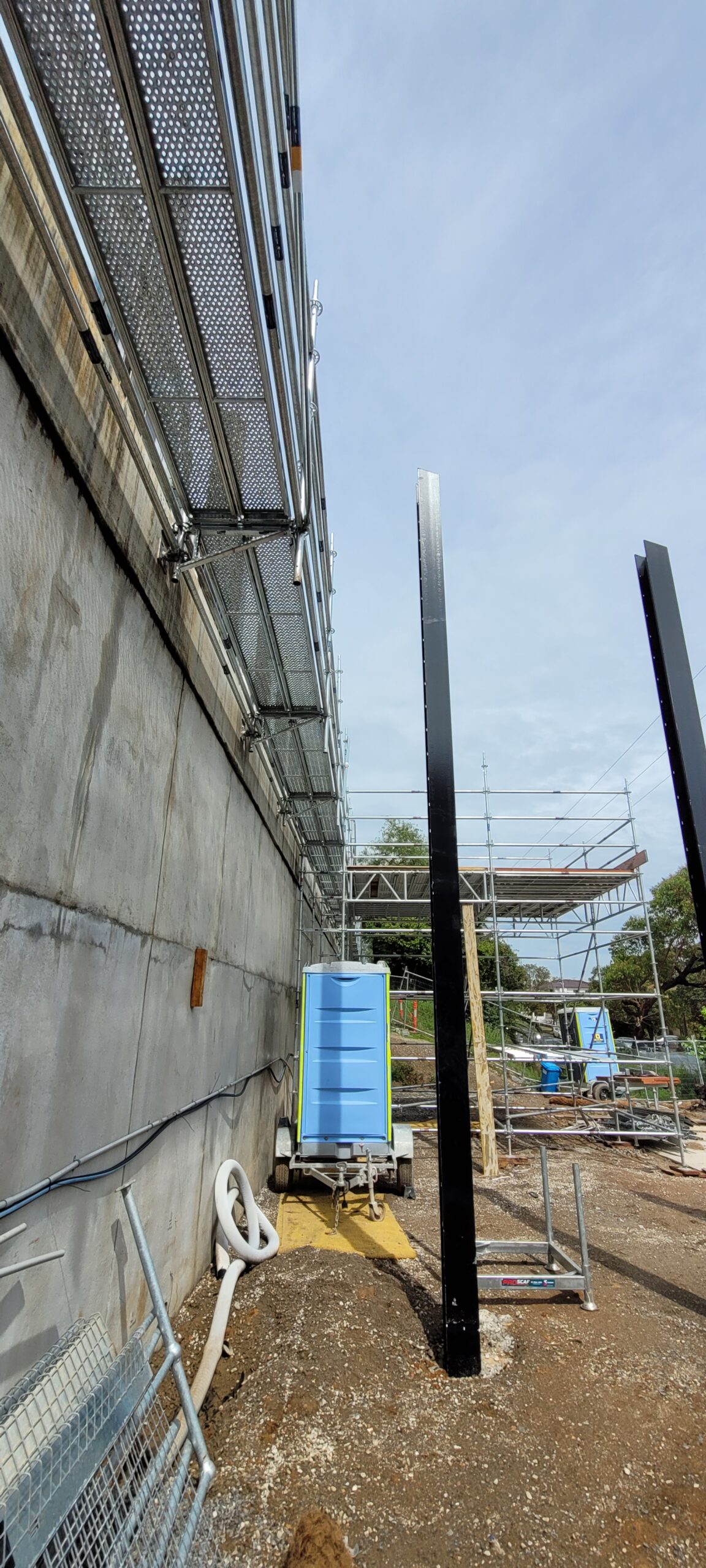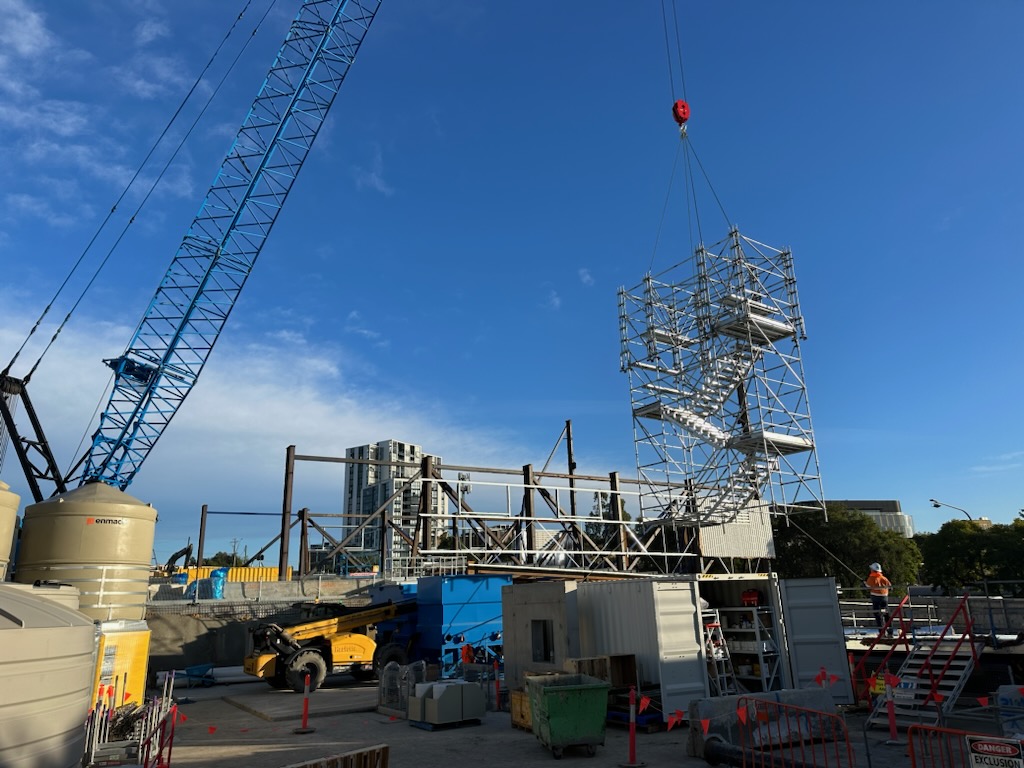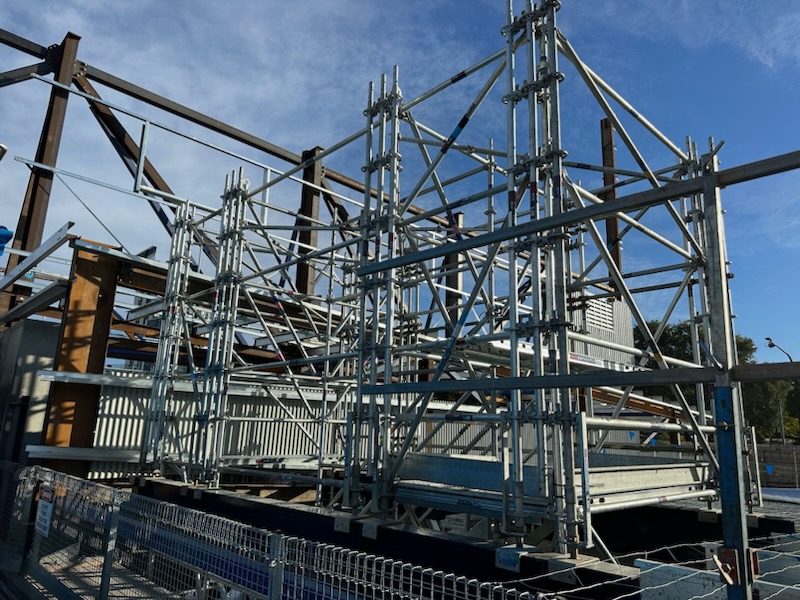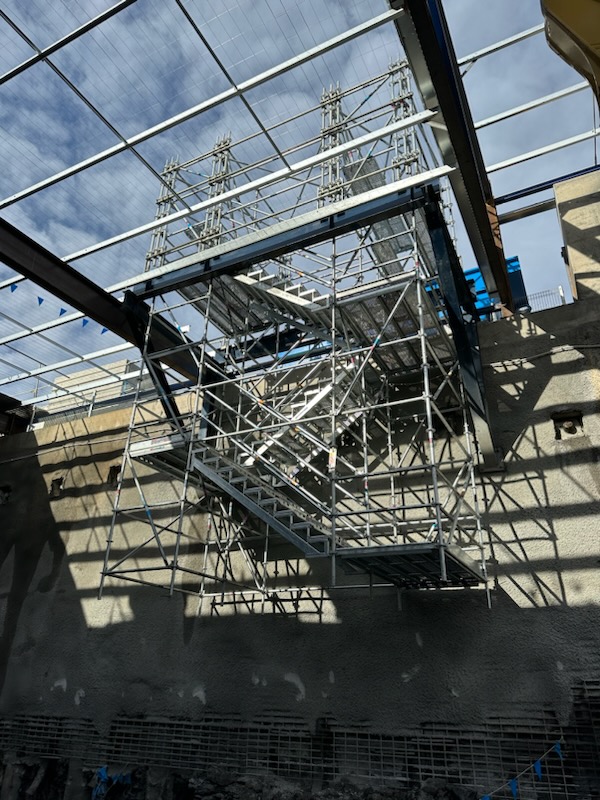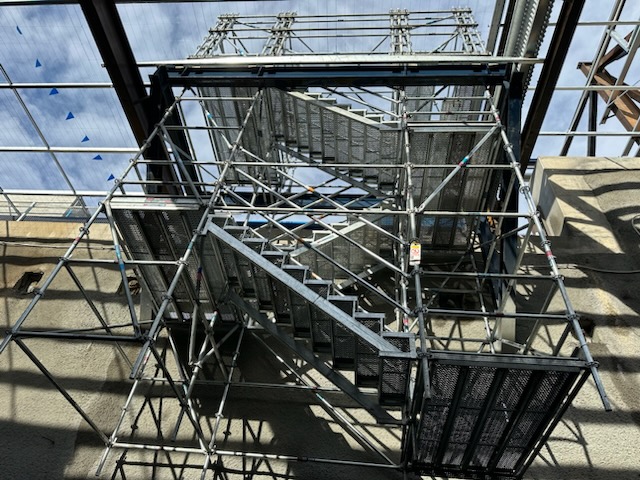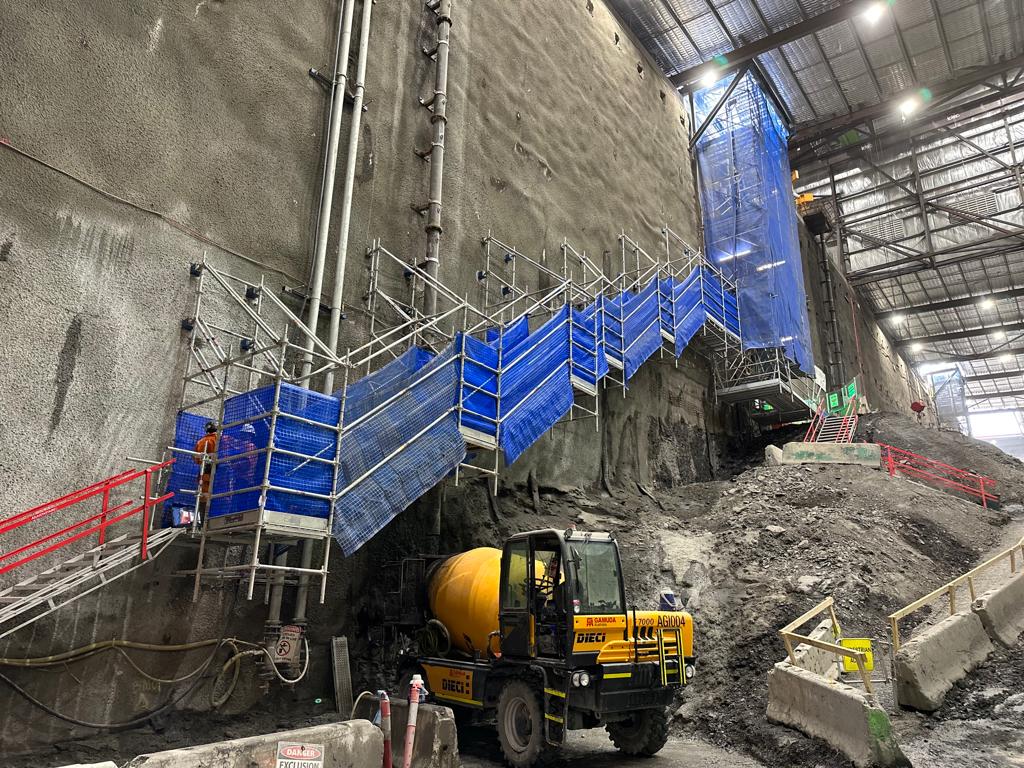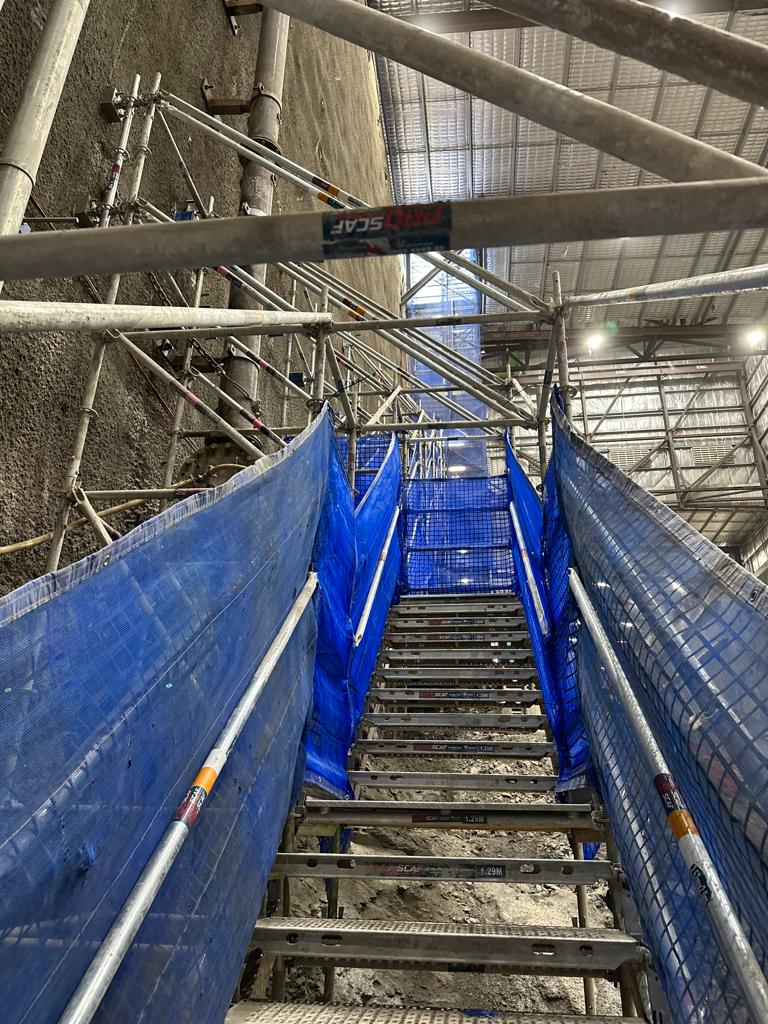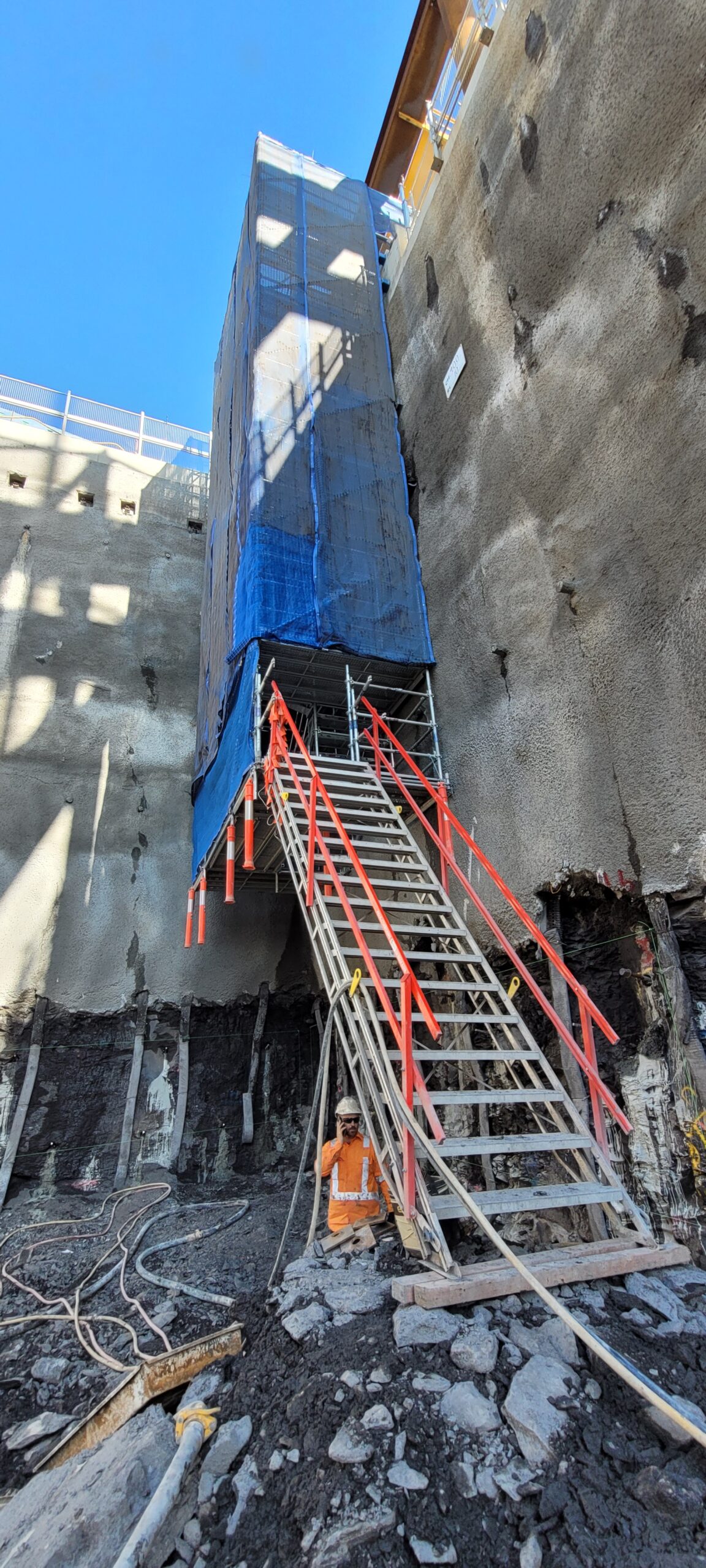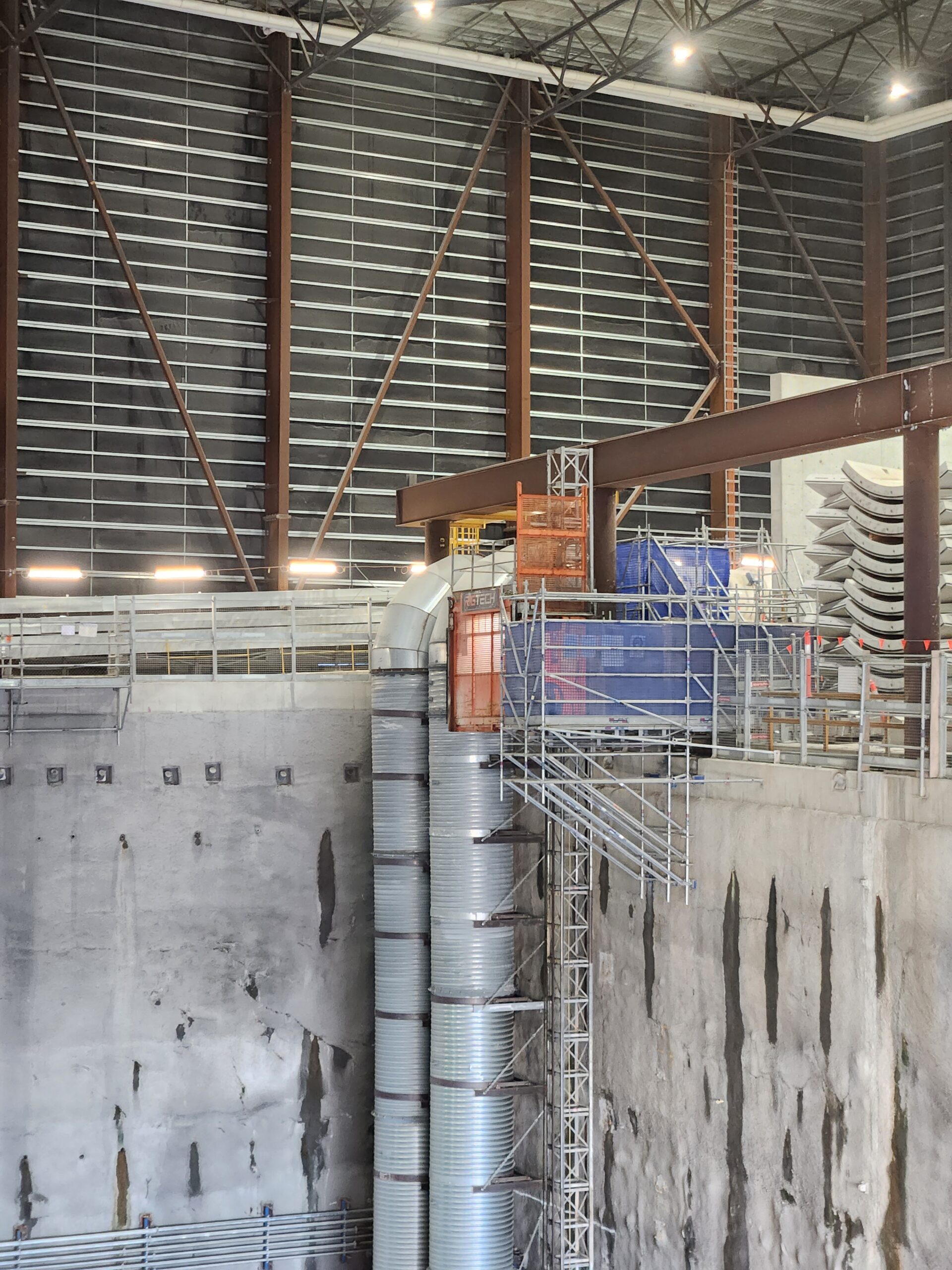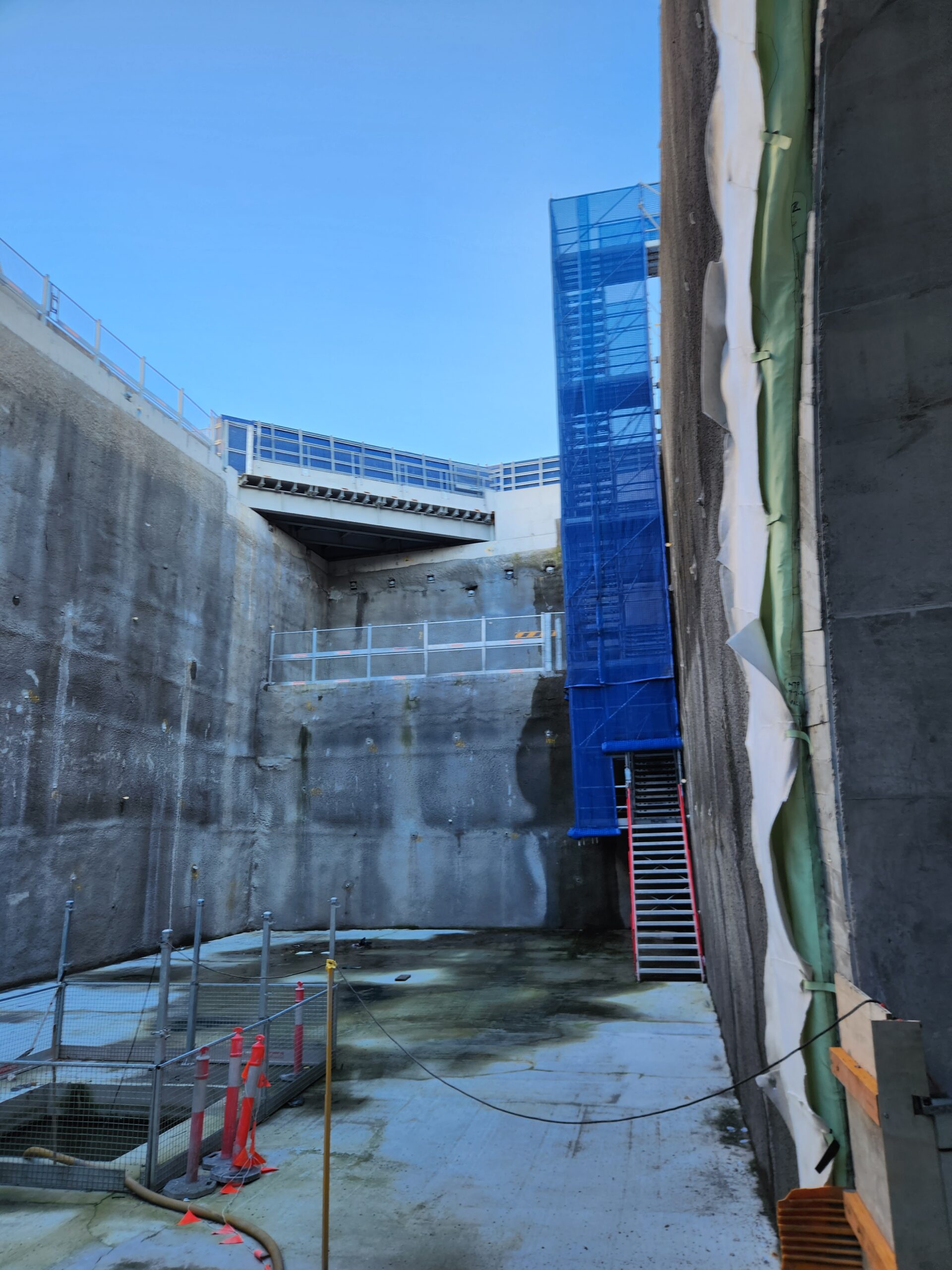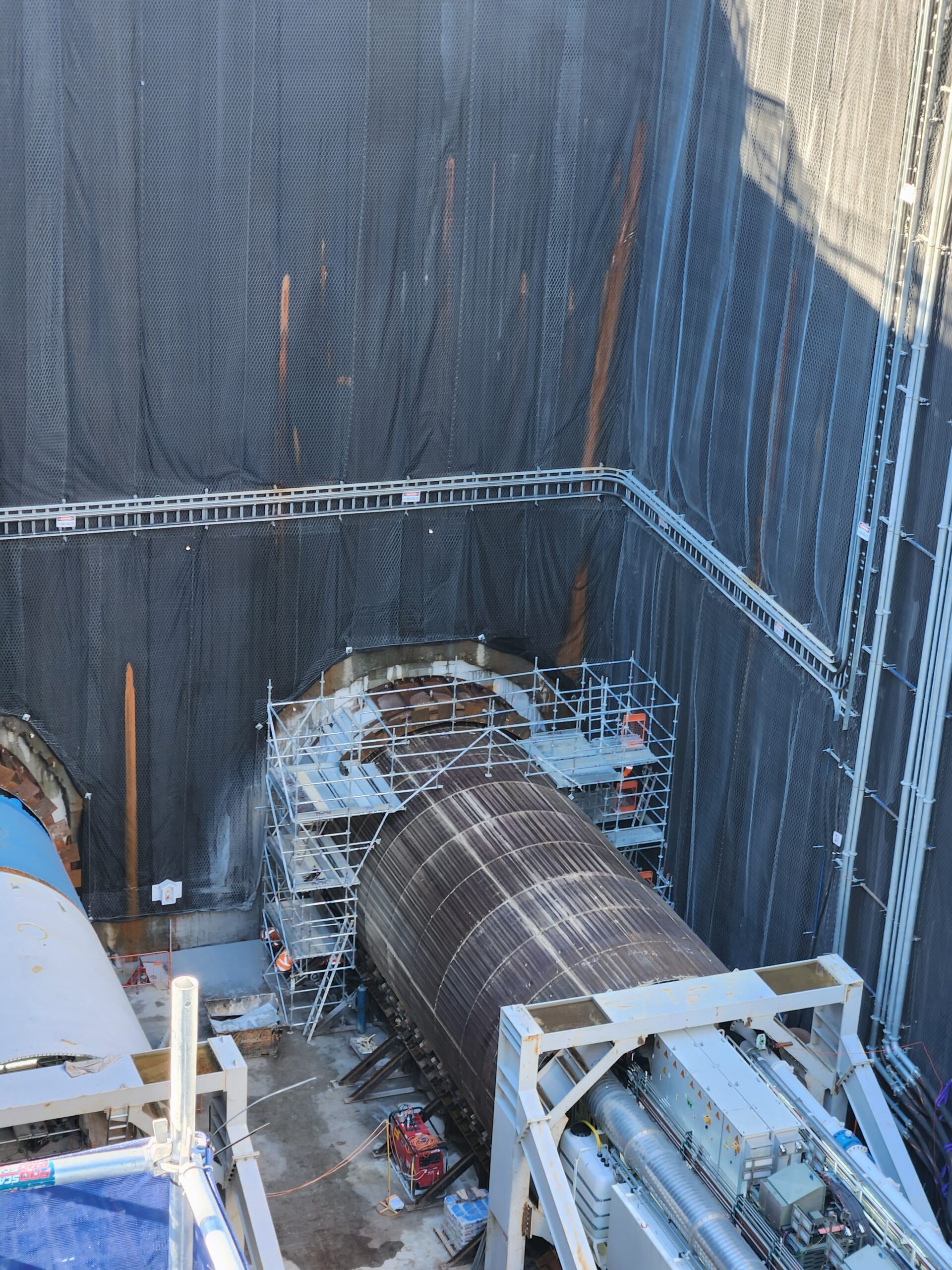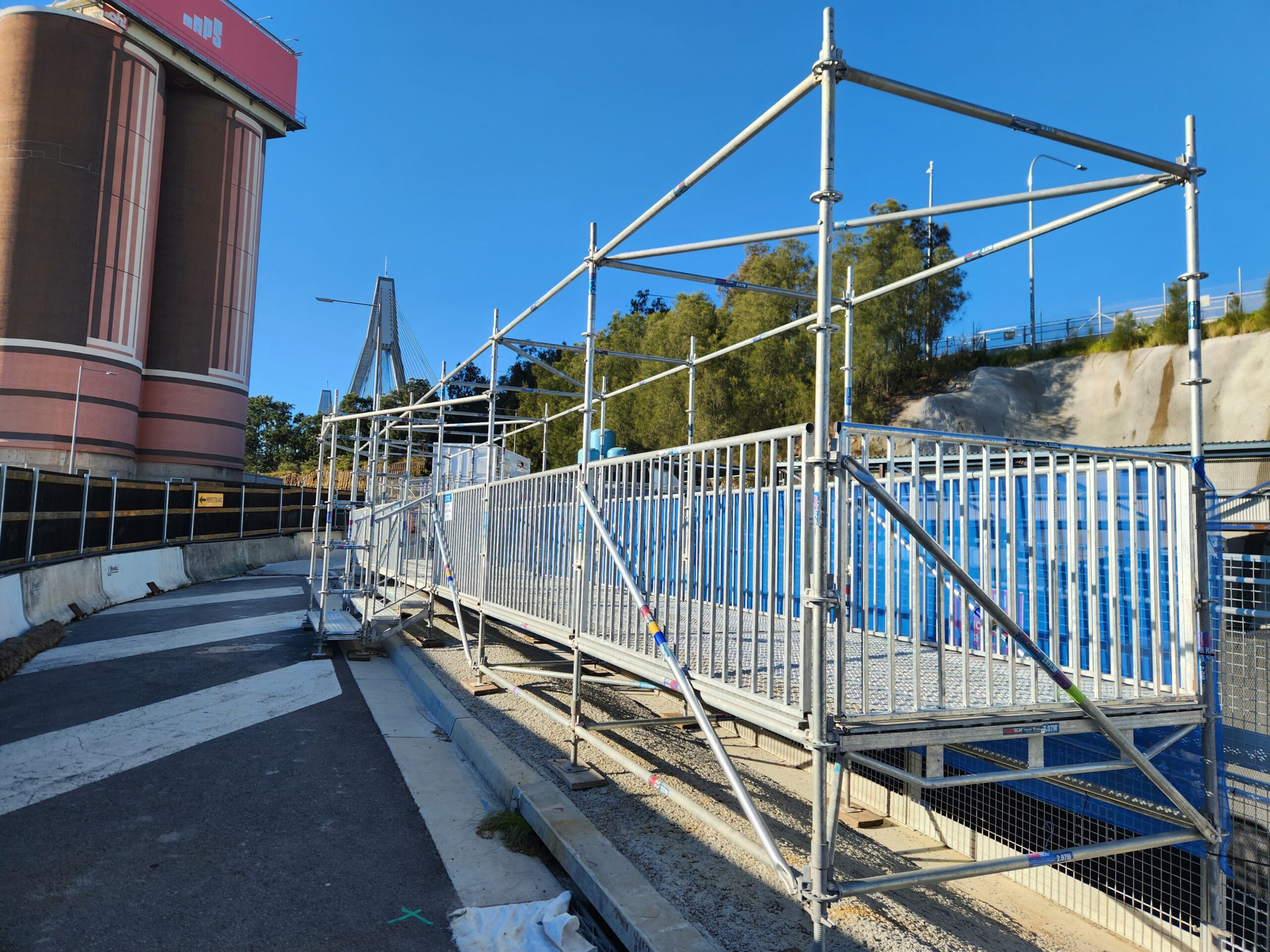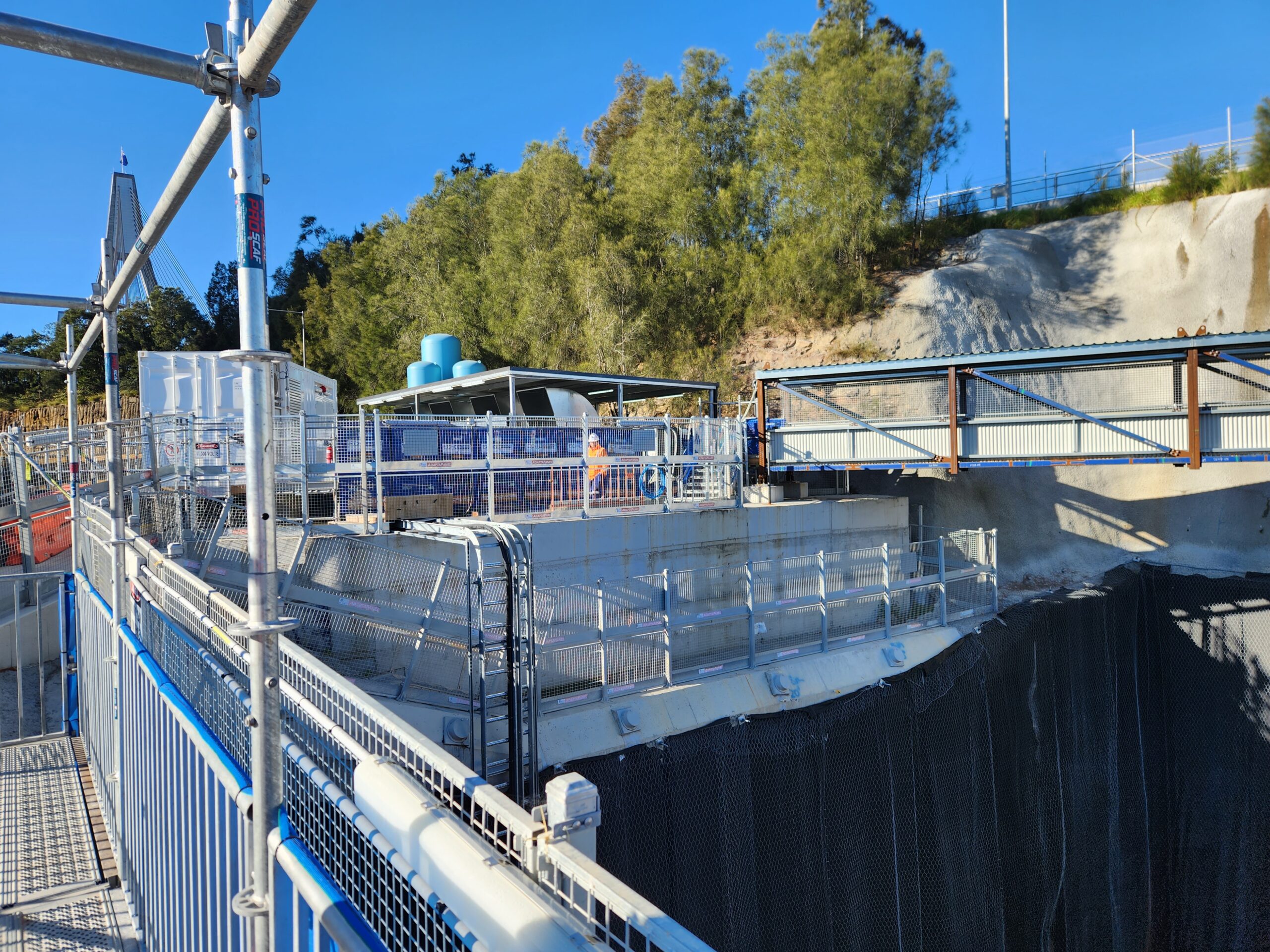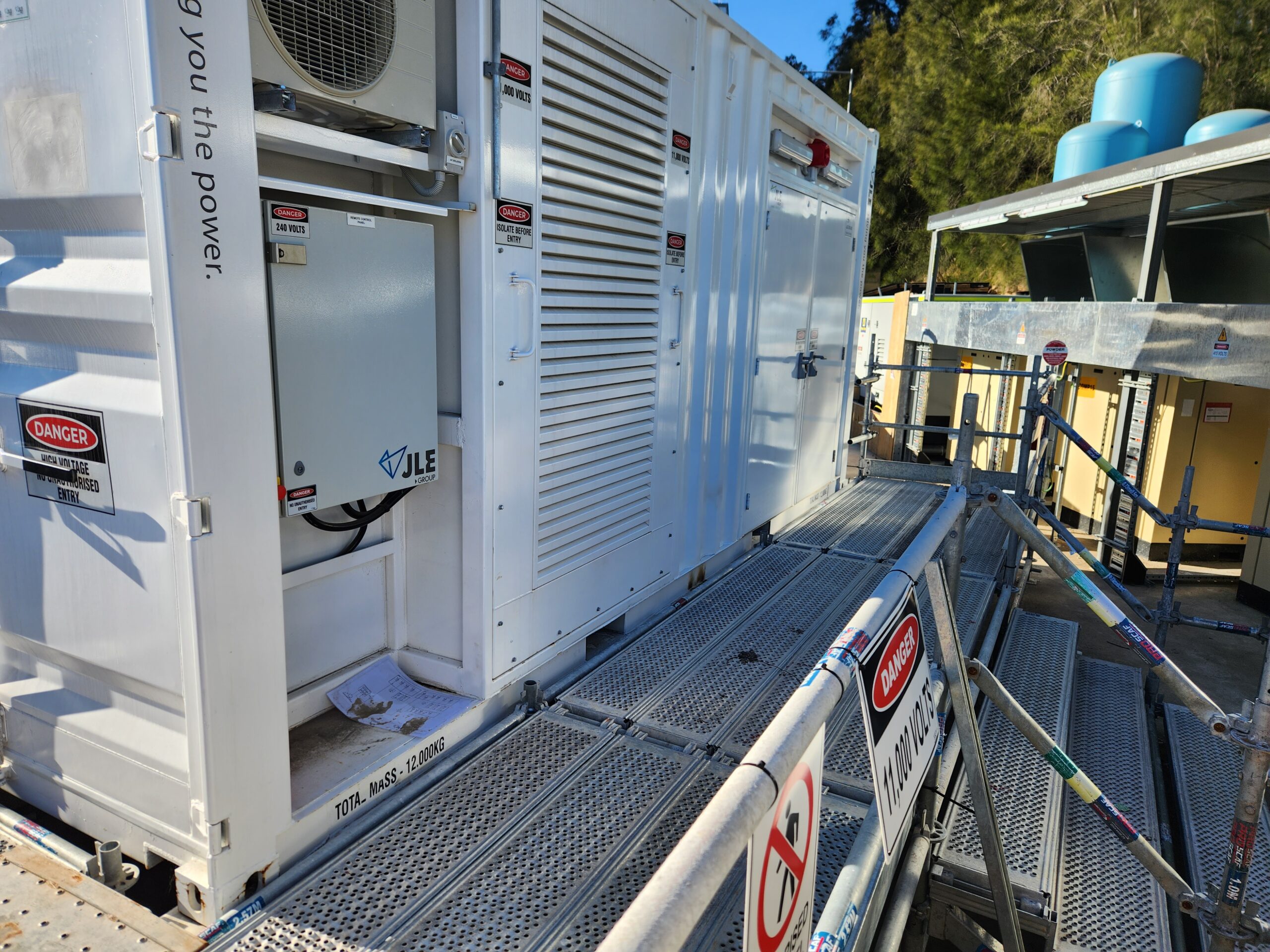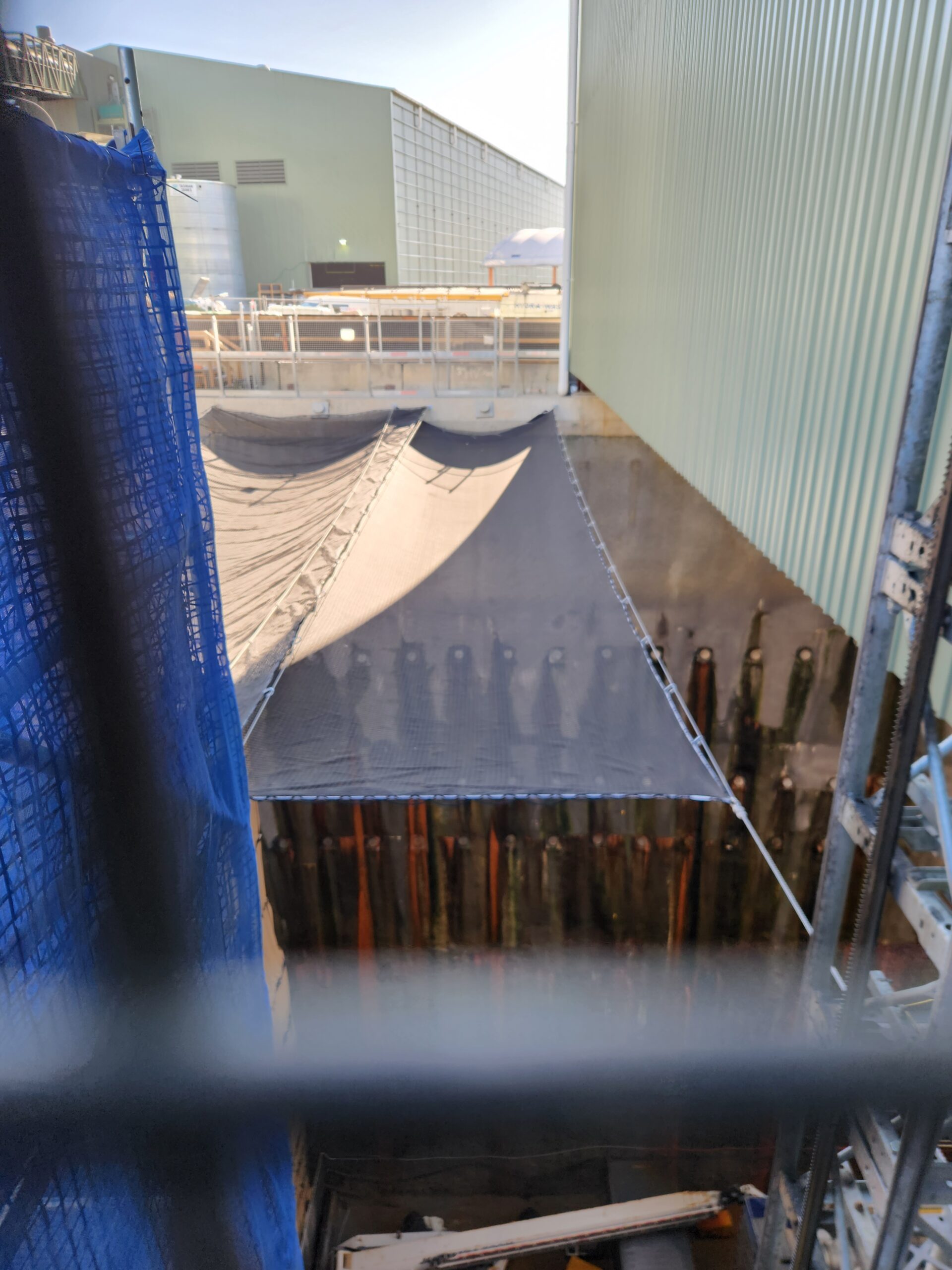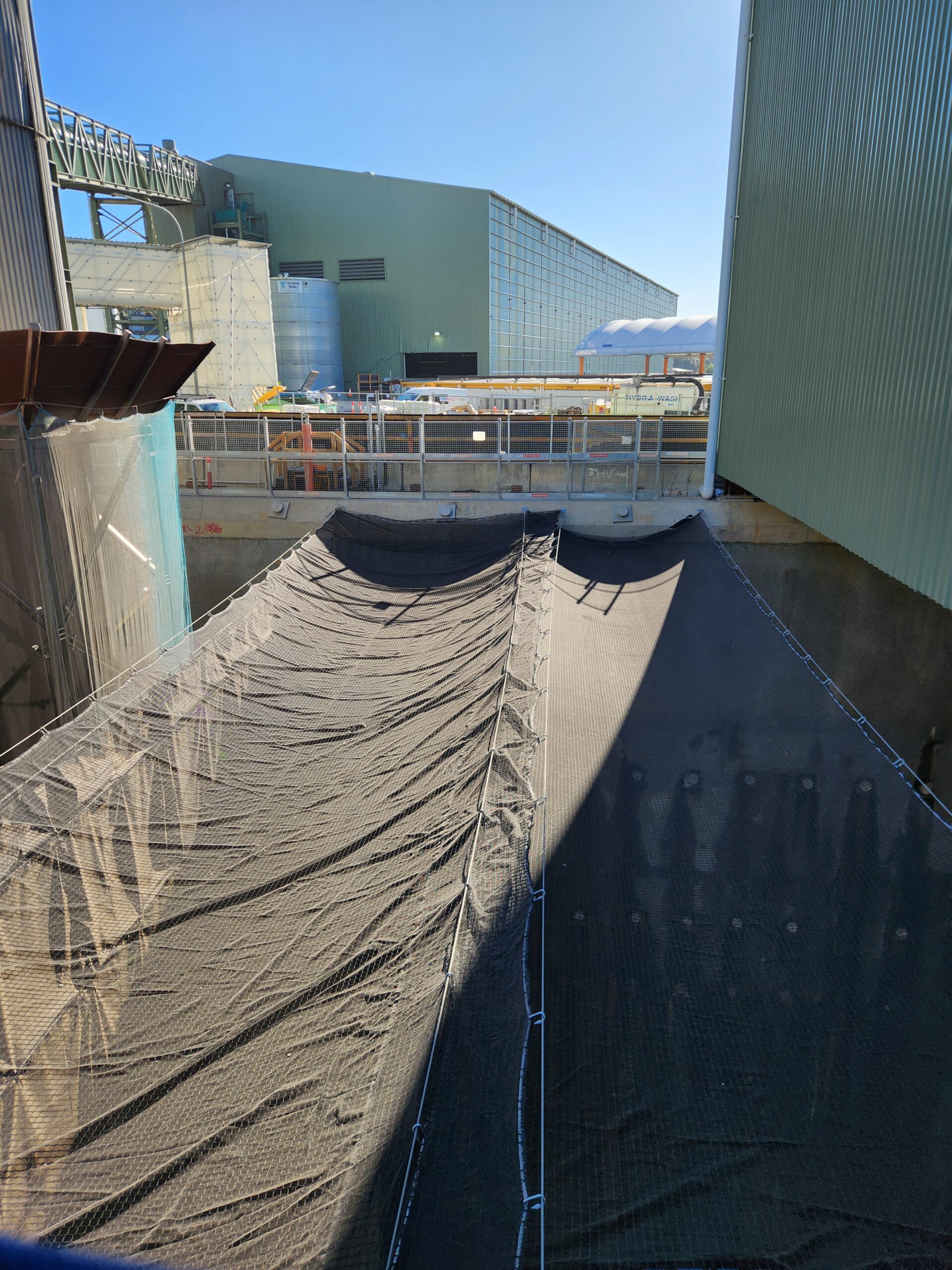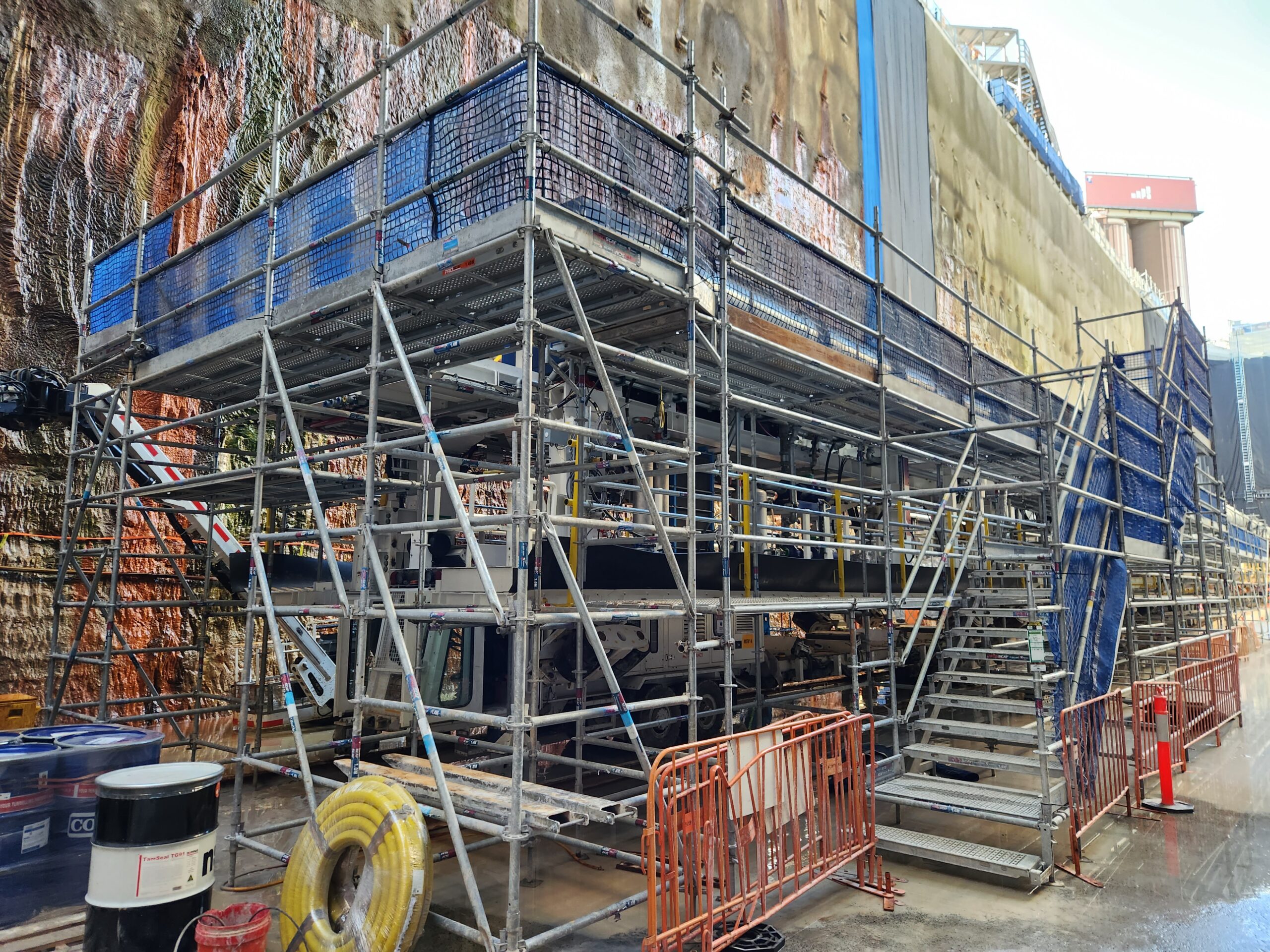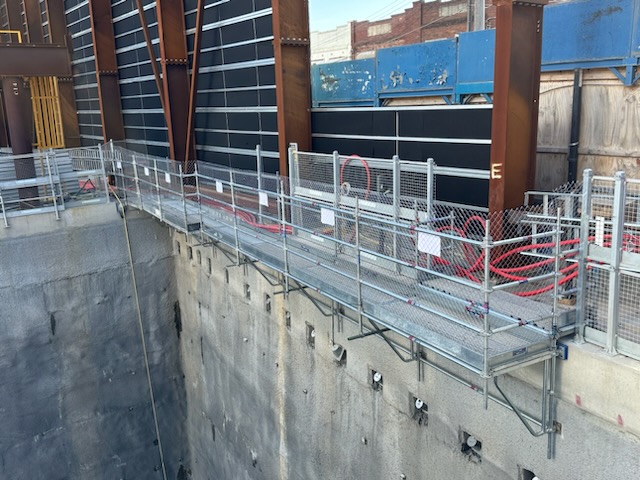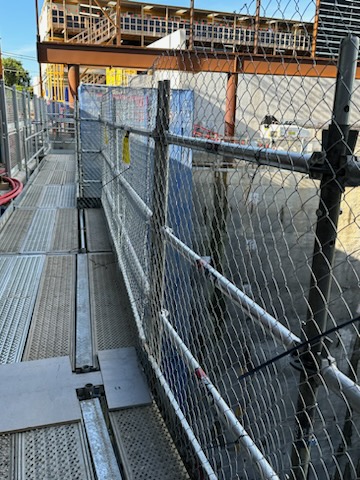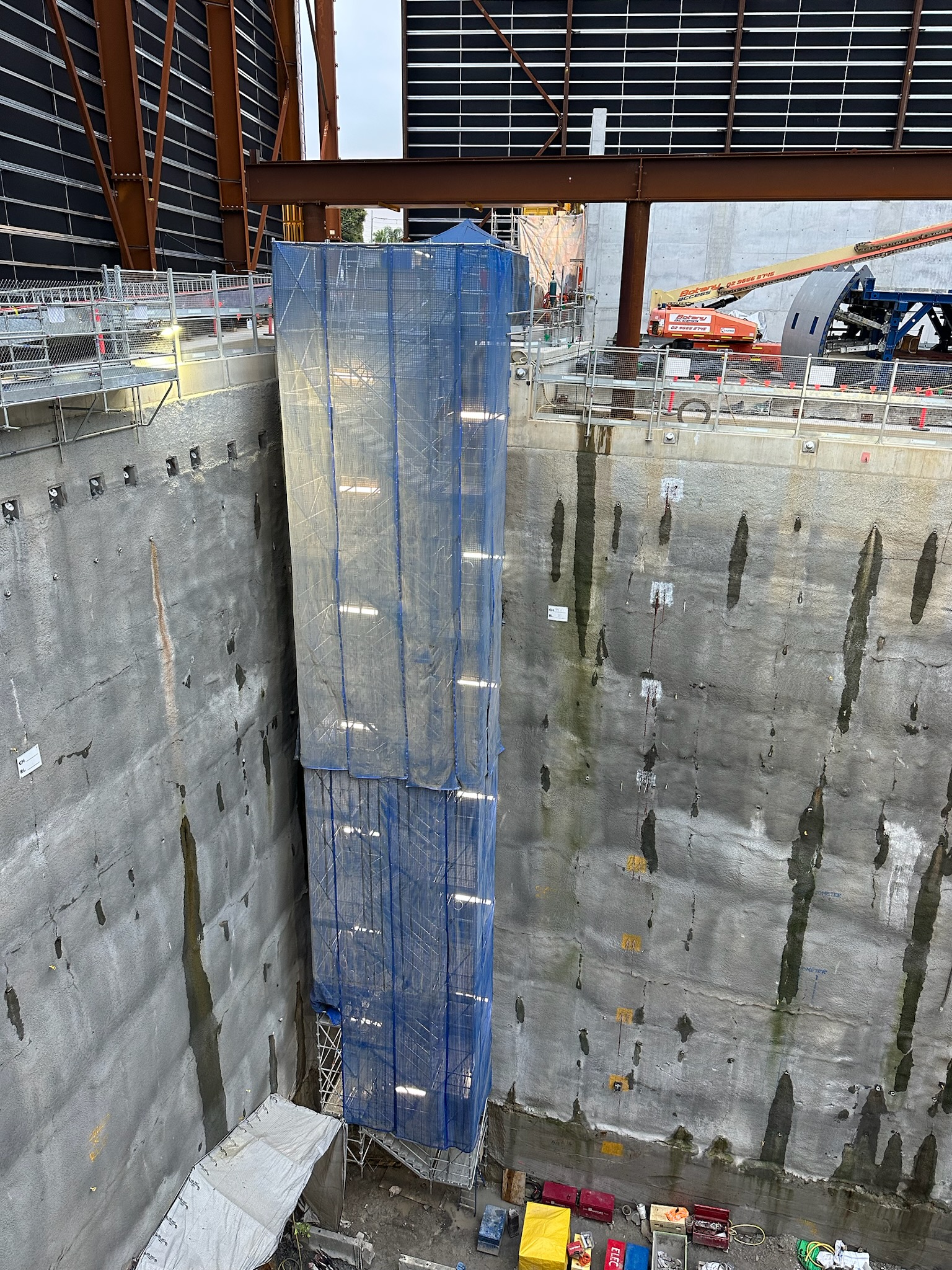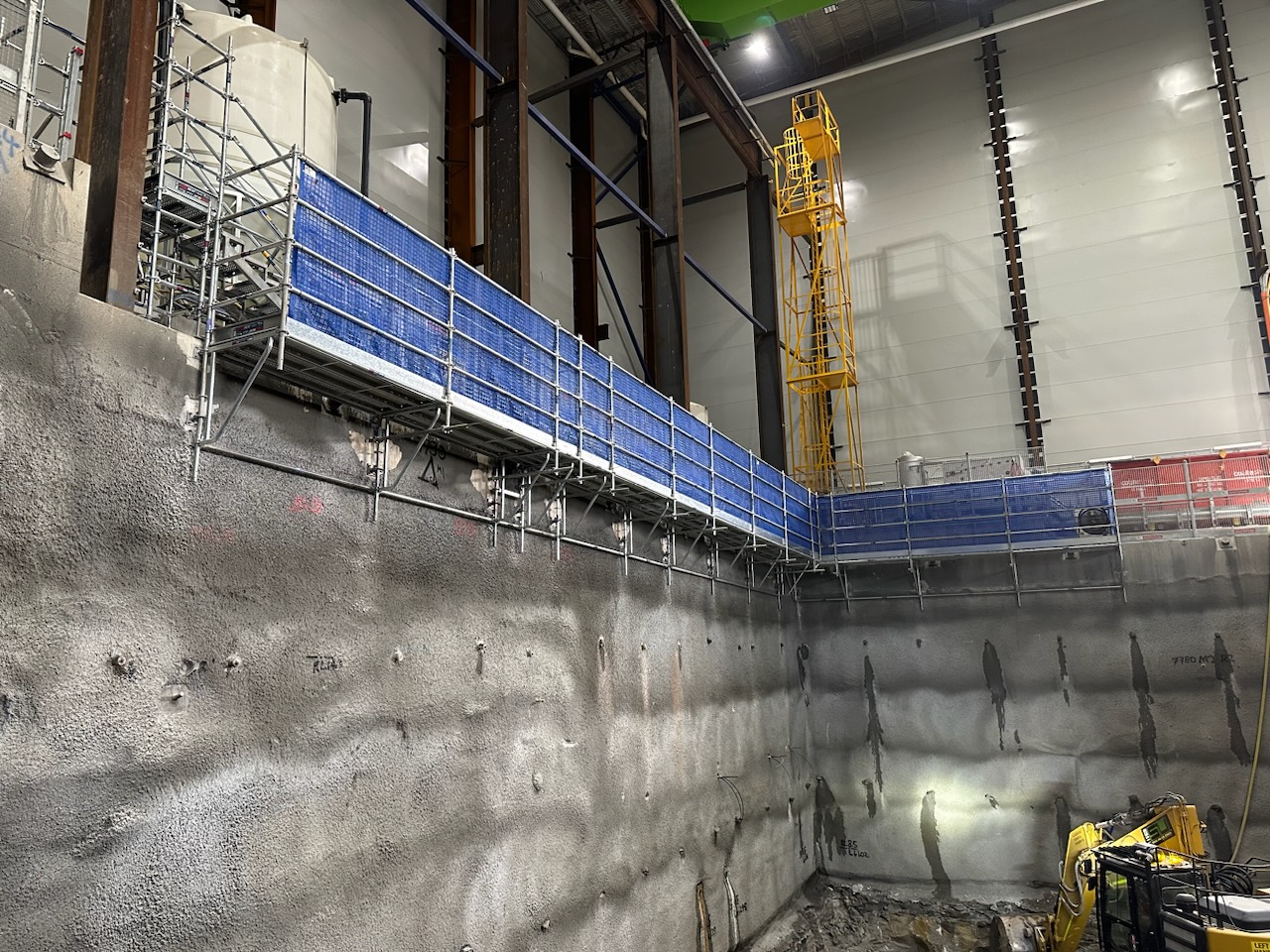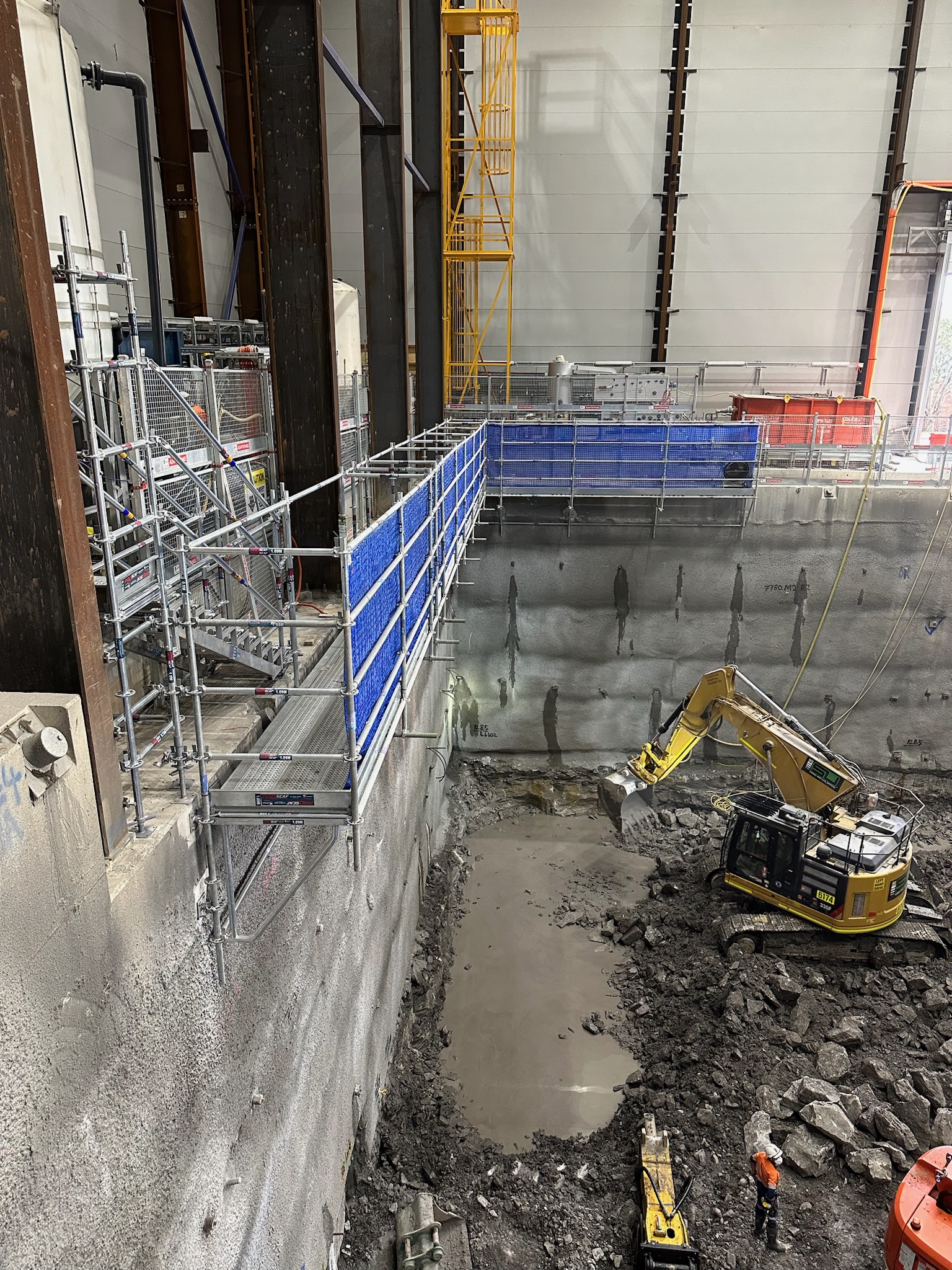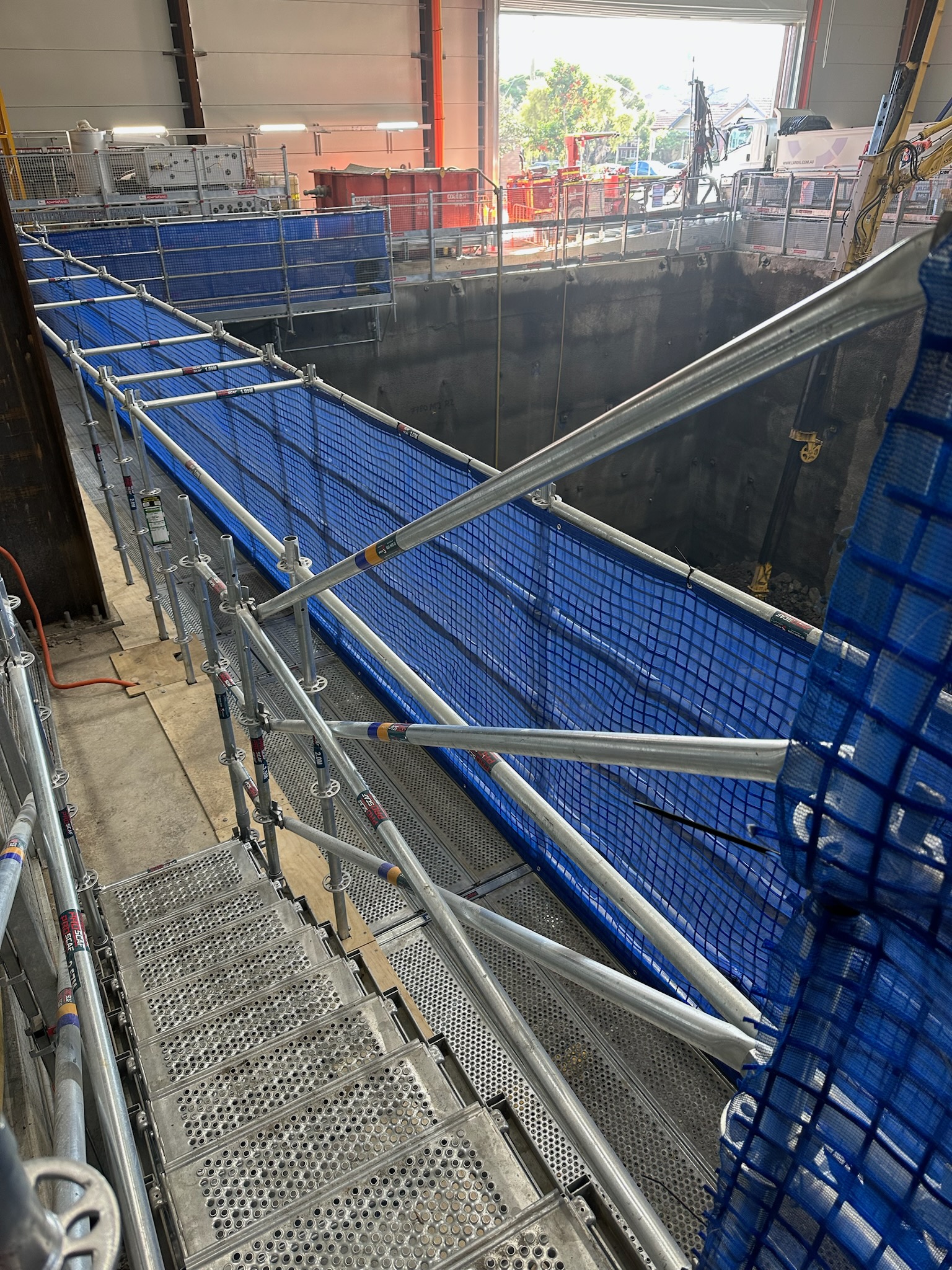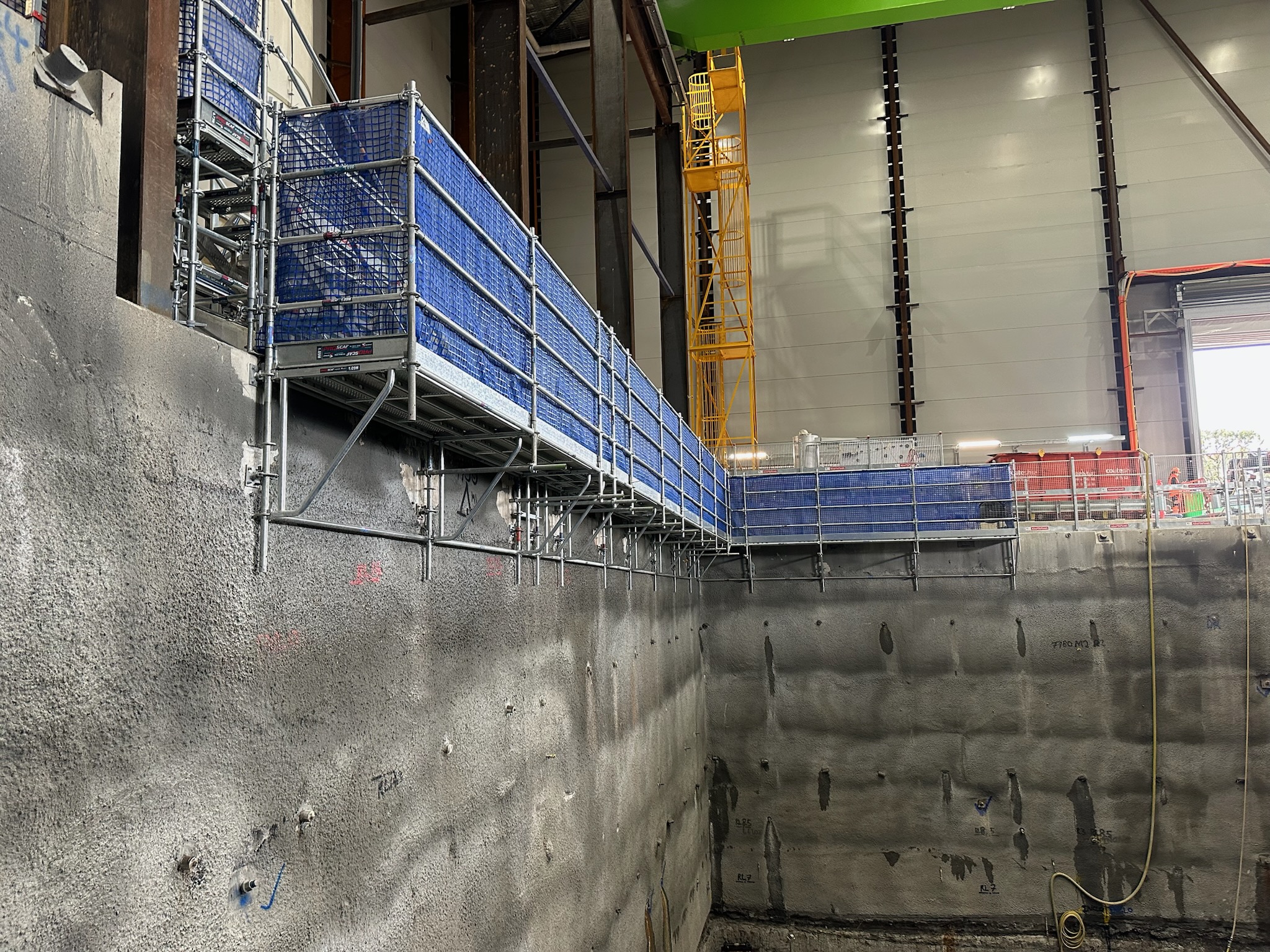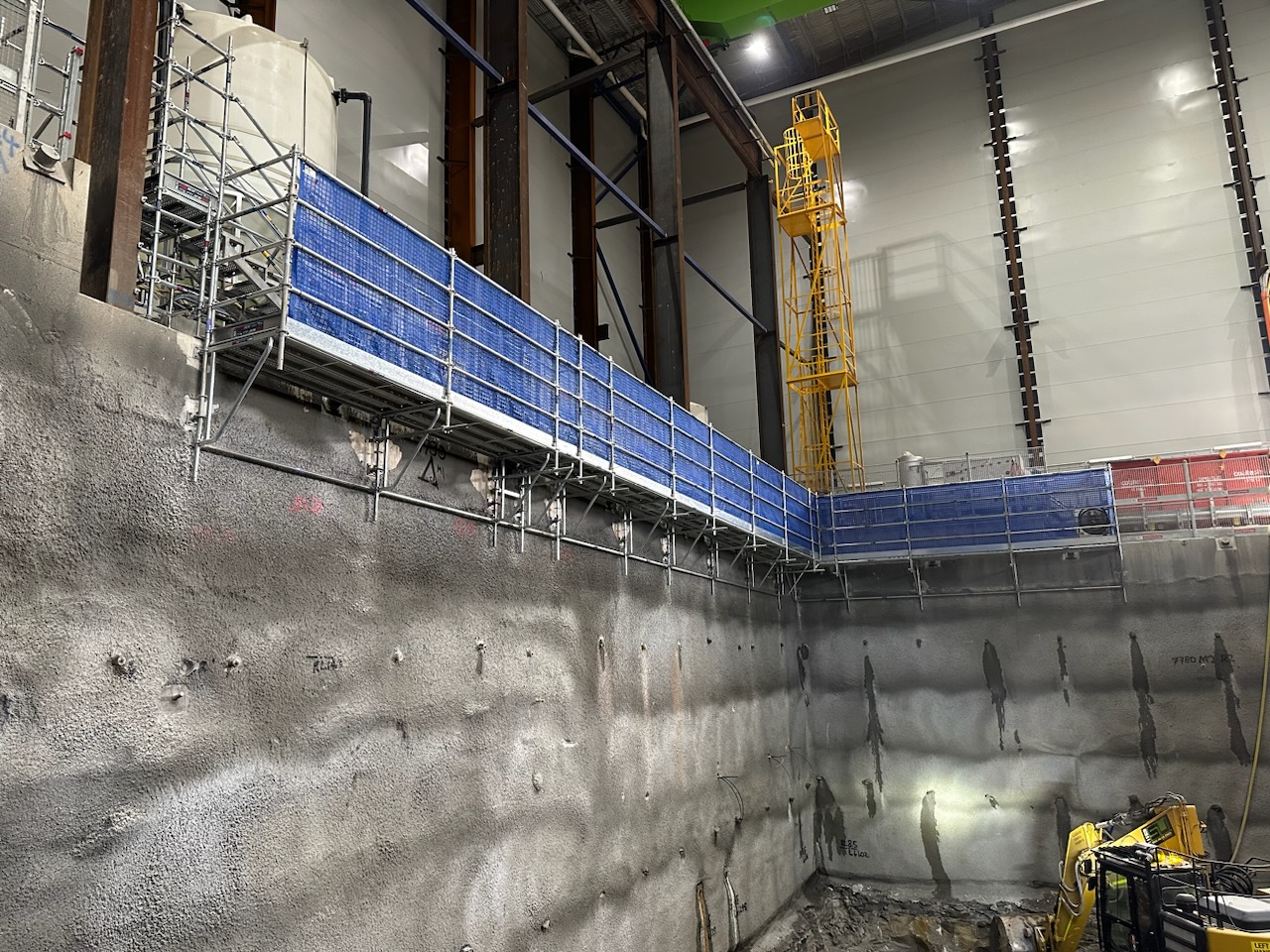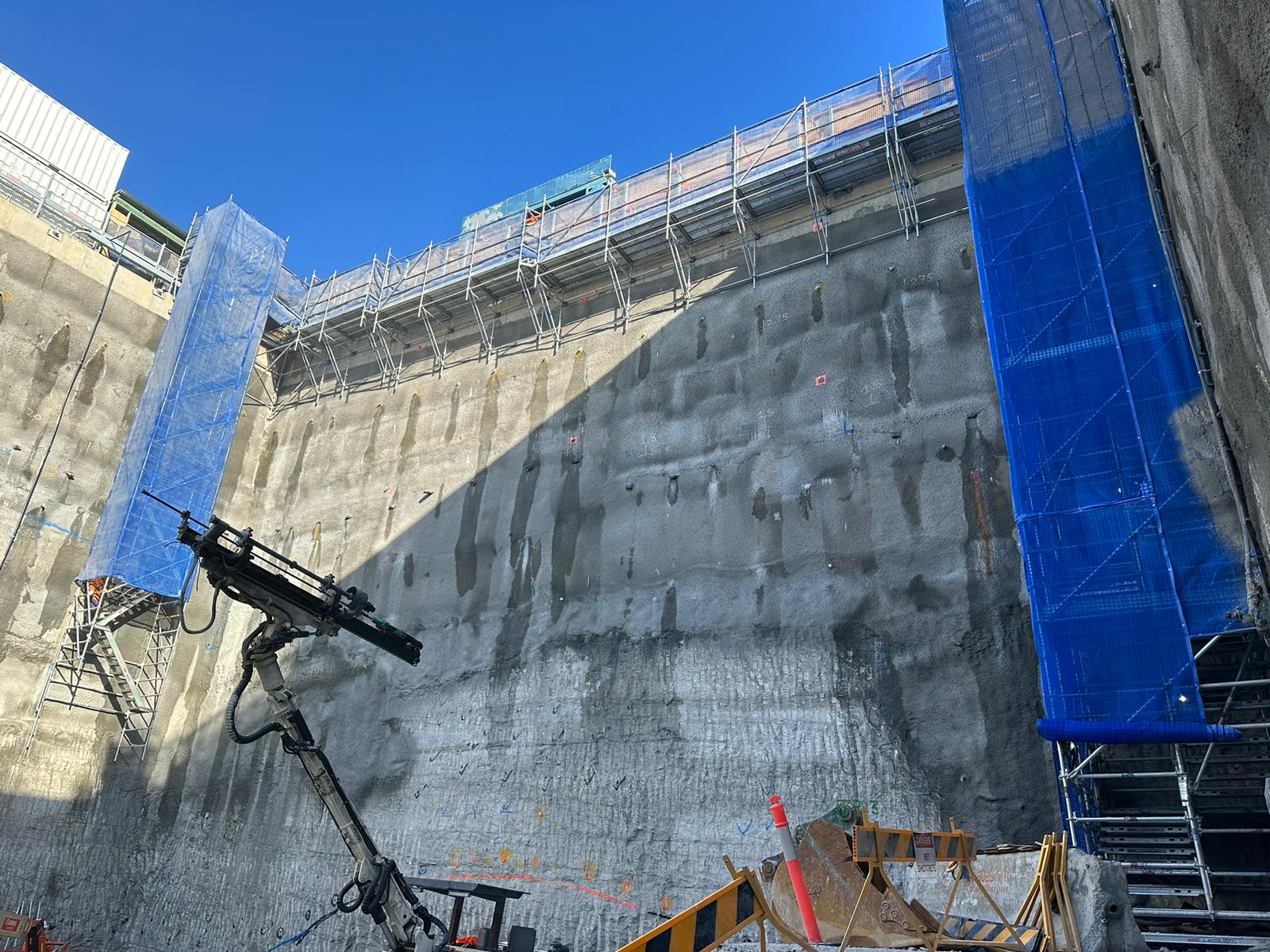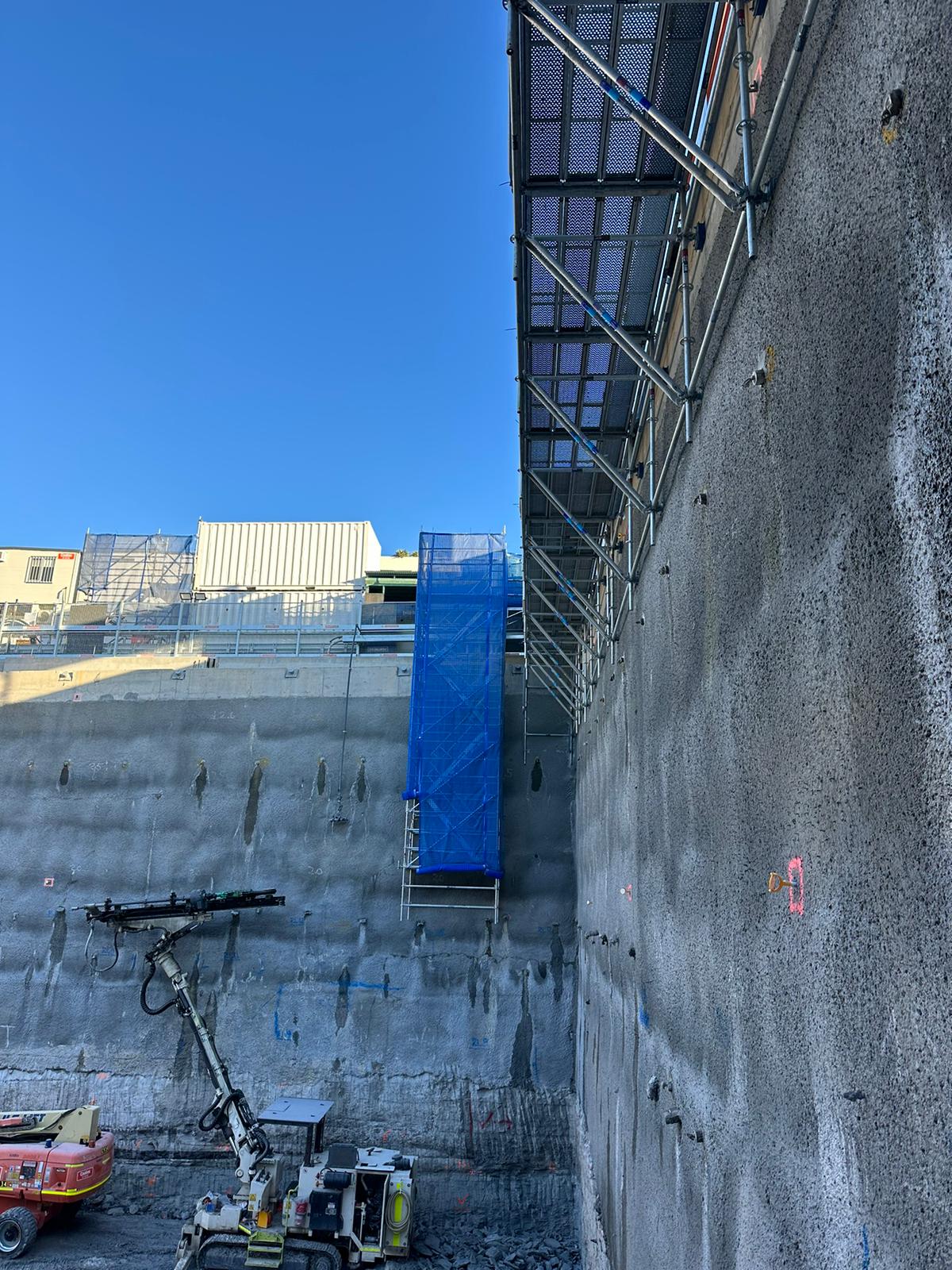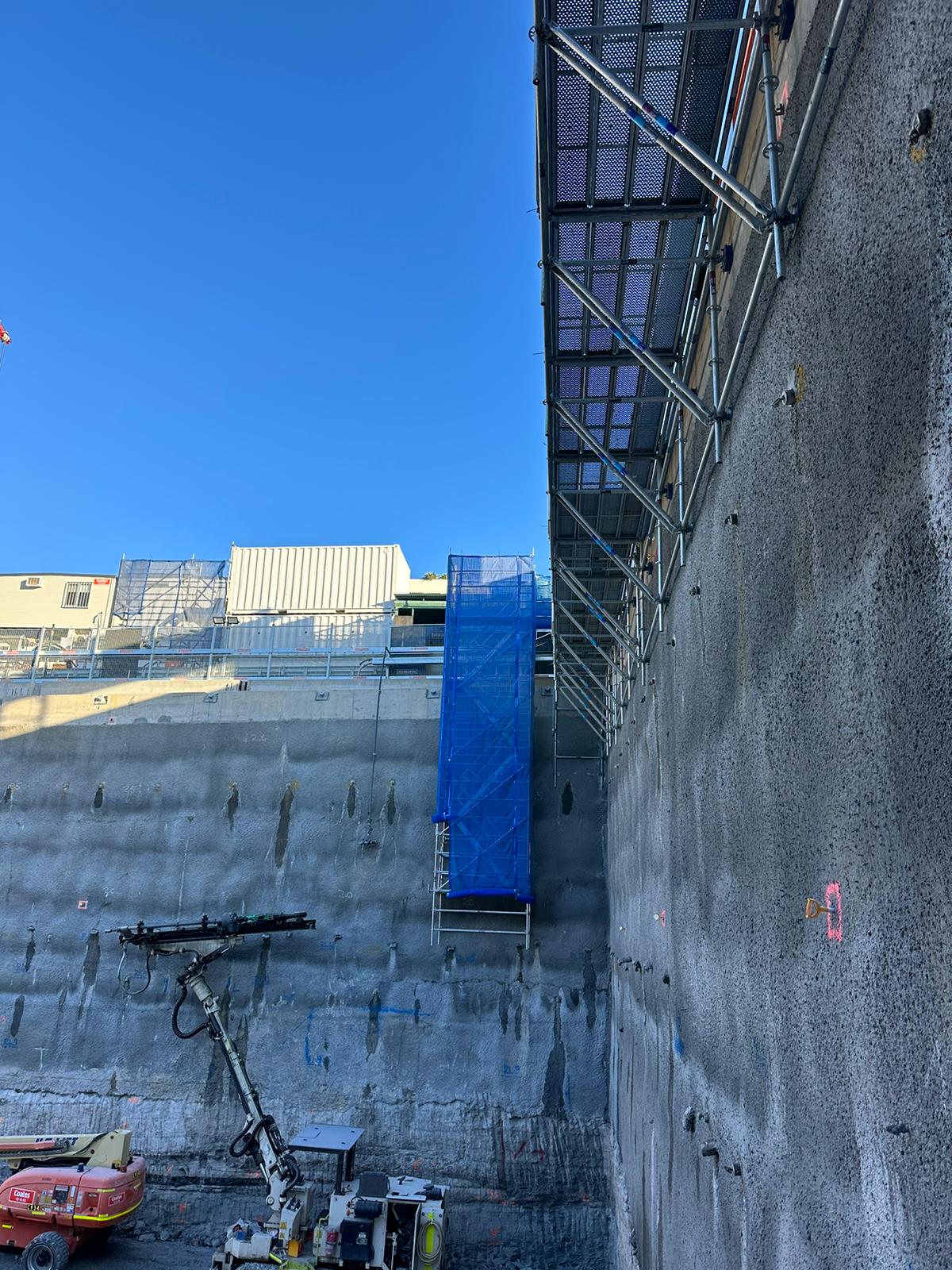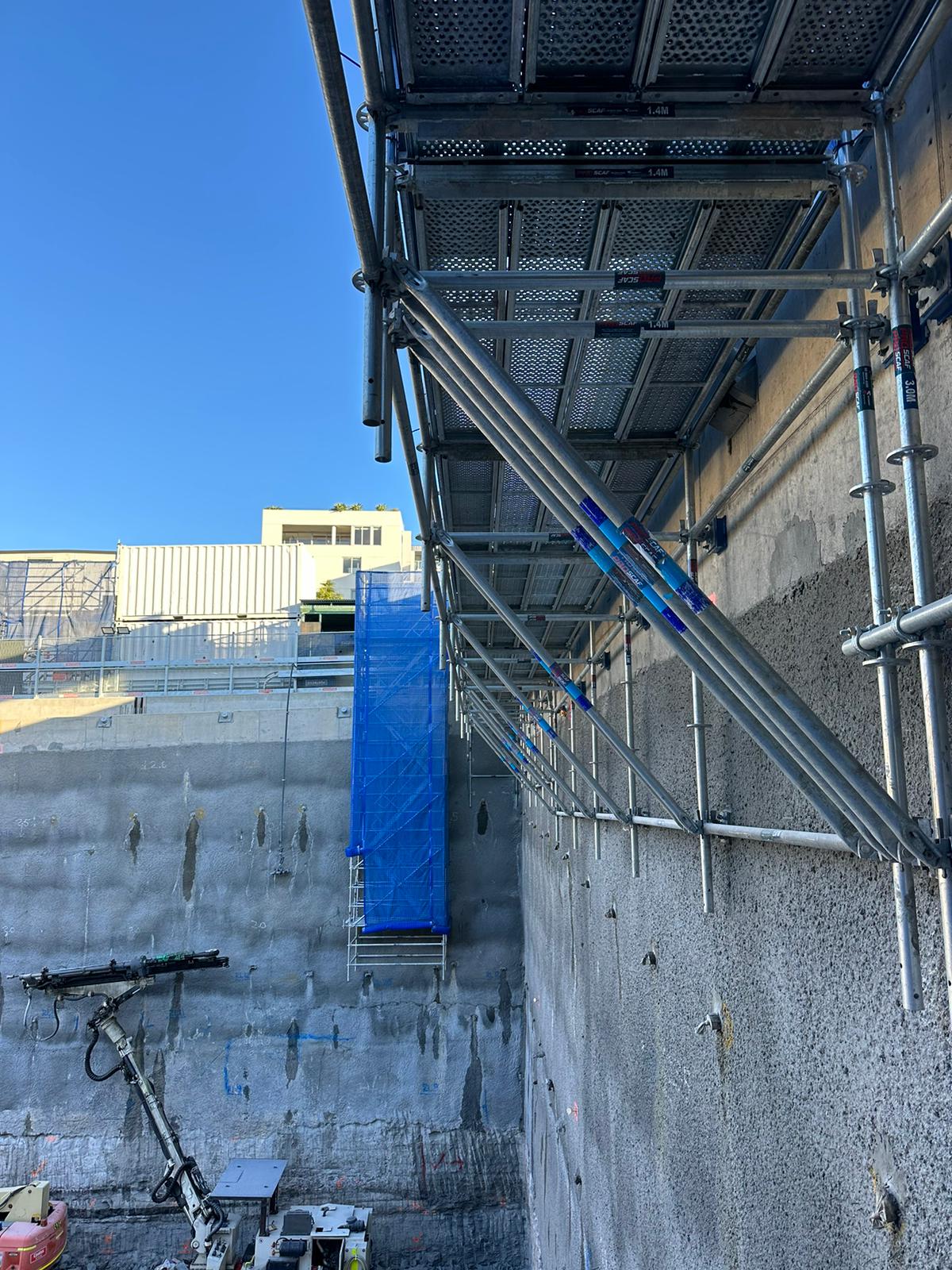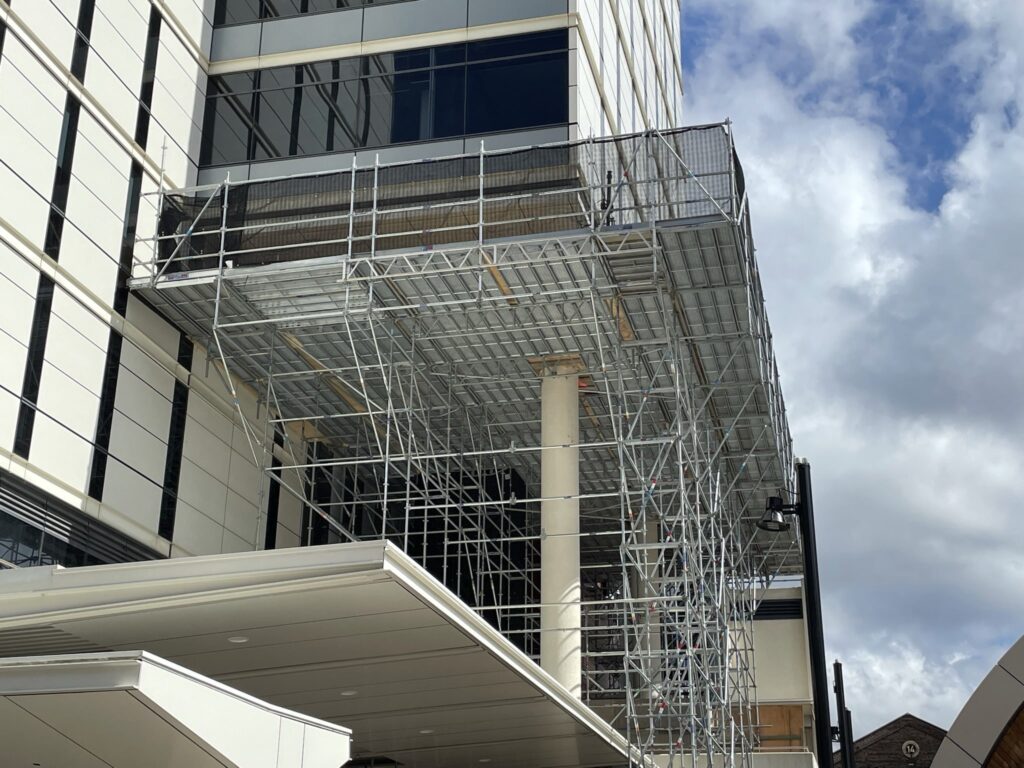In Pyrmont, the Google Headquarters are undergoing an extensive facelift. Built commissioned Express Scaffolding, to provide scaffolding for workface access to difficult to reach places so their crews could remove high-risk flammable cladding as part of a property-by-property fire safety audit.
The push from the Victorian and New South Wales governments to remove dangerous cladding on high-rise buildings follows the horrific Grenfell Tower blaze in London that killed 72 people in 2017. As a result, many buildings across major urban centres find that the cladding on their buildings is at high risk and are recommended that the material be removed.
In Google’s Pyrmont offices, the challenge was that access to the required work fronts was very limited, making it difficult to get scaffold material into position and leaving little room to build an access scaffold. Few options are available on the market that allows for easy construction of a scaffold in confined spaces and provides the strength needed for the task.
The best way to do it? Proscaf.
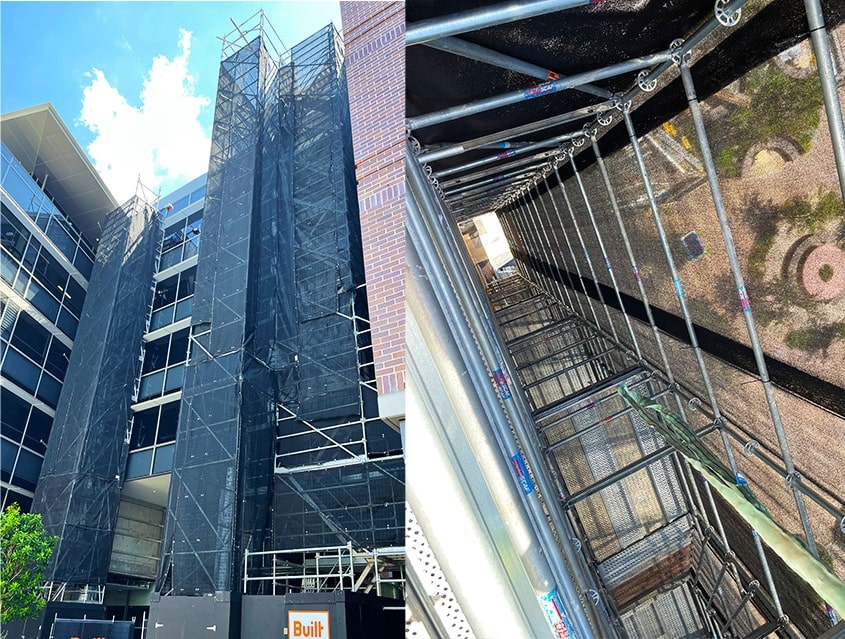
Utilising Proscaf, Express provided an innovative solution that saw the use of steel stretcher towers to provide access to the various vertical work areas. The steel stretcher towers offered the perfect solution as they maintain structural stability without the use of buttressing, meaning they can accommodate the transfer or workers and material while also being able to be quickly and easily assembled up the buildings in relatively space-restricted areas.
However, the team faced a challenge when removing and installing cladding along the overhanging roof because of its confined space and the need for a lightweight but strong scaffold. The aluminium version of Proscaf was an excellent option for its locking and load-bearing properties that steel provides but with the advantage of lighter weight structures.

With the advantages of Proscaf Aluminium, Express erected cantilevered scaffolding bays that now granted access to the underside of the roof without infringing on the limited space in the upper floor and roof cavity. There was only room to build a 730mm deep bay inboard, which was tied to a structural steel beam. From the beam, approximately 2.5m of scaffold was swung and cantilevered out, supported by the Proscaf Aluminium braces. Check out our video below on how continuous cantilever bays are built with Proscaf aluminium.
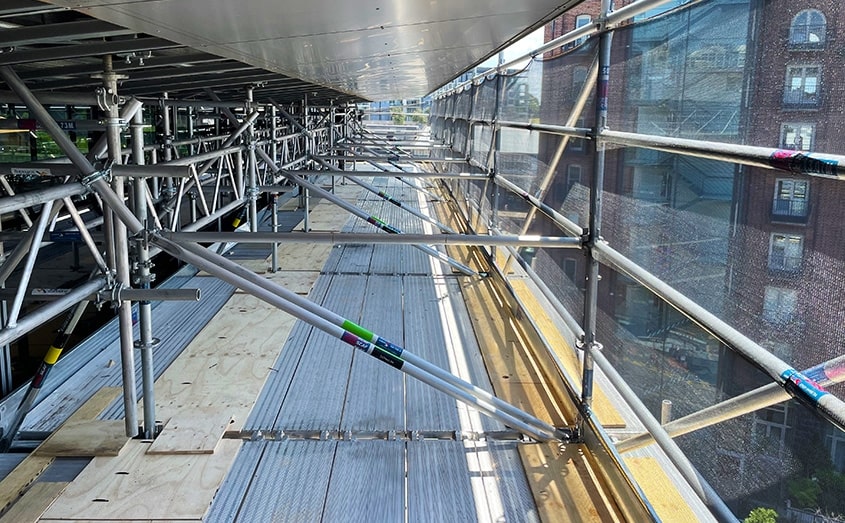
The resulting structure provided a safe and stable cantilevered platform. As a result, Built’s crews could quickly and easily access the difficult to reach work fronts, safely removing and replacing the cladding with minimal disruption to Google’s day-to-day operations.
The scaffold crew from Express Scaffolding were very impressed with the lightweight and optimum strength of the Proscaf Aluminium system, which made it easy for them to handle and install in confined, high-risk areas. The client, Built, was well satisfied with the scaffold access and commented on the strength and solidity of the scaffold platform.
Do it right with Proscaf
Scaffolding comes in many different forms, each with its own advantages and disadvantages. So when choosing a scaffolding system for your project, it is essential to consider the job’s specific needs. But if you need a lightweight but solid and easy to install system, then Proscaf Aluminium may be the best choice for you. Or maybe it’s a combination of steel and aluminium scaffolding solutions like the Google HQ project.
You can do a lot with Proscaf. It’s the answer to many complex access problems. With its unique design, the Proscaf system can quickly, efficiently, and most importantly, safely access challenging and dangerous areas.
And we’re with you every step of the way. Our engineering team will provide you with expert advice and design on using Proscaf for your project. Talk to us today about how we can help you overcome access difficulties safely and efficiently.


